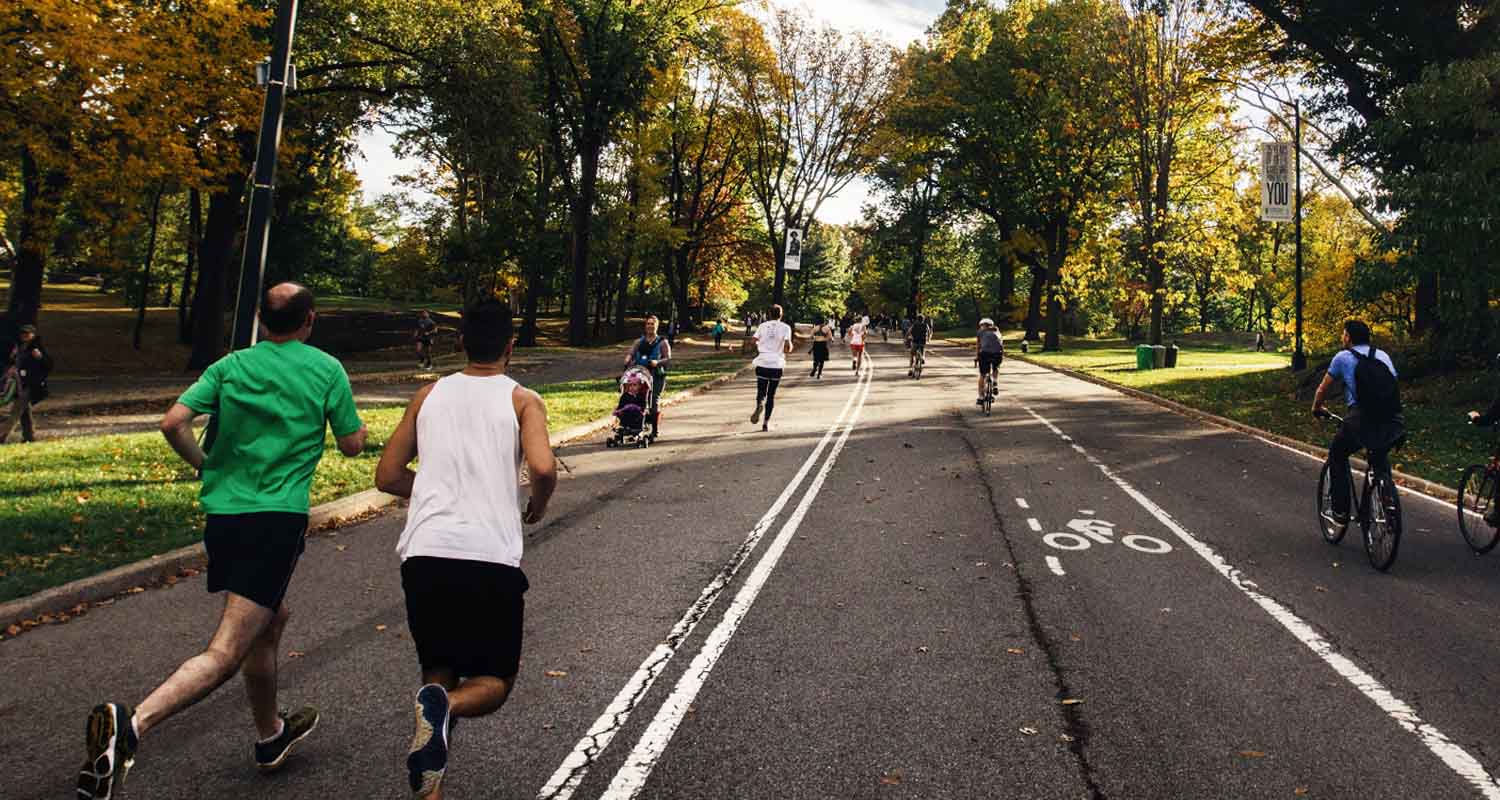
“BDNF is like Miracle-Gro for your brain.” That’s how Harvard psychiatrist John Ratey describes brain-derived neurotrophic factor (BDNF), a powerful little protein that stimulates your production of new brain cells and strengthens existing ones. More specifically, when you release BDNF, it flips the switch on a series of genes that grow brand new brain cells and pathways. High BDNF makes you learn faster, remember better, age slower, and rapidly rewire your brain.
BDNF also increases your brain’s plasticity. When your brain cells get damaged or face a stressful situation, BDNF protects them and helps them come back stronger. Your neural pathways become more flexible instead of shutting down, which could explain why higher levels of BDNF are associated with warding off depression. [1].
With a few well-placed daily habits, you can set your brain up to release more BDNF all the time, keeping your brain resilient and priming it to grow stronger.
8 ways to increase BDNF
Exercise. Endurance exercise releases a protein called FNDC5 (fibronectin type III domain-containing protein 5. Catchy, right?). FNDC5, in turn, increases BDNF by 200-300% [2]. The increase is long-lived, too: men who cycled daily for 3 months nearly quadrupled their resting BDNF [3,4].
Strength training increases BDNF, but only for a few minutes post-workout. Opt for moderately intense cardio, like Mark Sisson recommends. Not a fan of running? Swim, cycle, do fast-paced yoga, or pick up a sport. Whatever gets your heart rate going.
Deep sleep. You release BDNF during the deeper stages of sleep [5]. There are four sleep stages, and you cycle through them every 90 minutes or so. On average, you spend about a third to half the night in stages 3 and 4, the ones that give you deep, restorative sleep.
With a few biohacks, though, you can drop into deep sleep faster and stay there longer in each sleep cycle. That means more BDNF release and better rest in less time. Here’s a full guide to hacking your sleep.
Meditation. Stress is toxic to BDNF [5,6]. No surprise, then, that meditation increases BDNF [7], specifically strengthening areas of the brain that correlate with pain tolerance, body awareness, meta-thinking (awareness of how you think), memory, emotional control, happiness, and attention [8].
Start by meditating for 5 minutes every morning. Some days you may quiet your mind. Other days your thoughts may run rampant. Don’t get too attached to the results, either way. Consistency is more important than “getting it right.”
Psychedelics. Both psilocybin (mushrooms) and LSD (acid) increase BDNF production and neurogenesis [9,10,11]. That could explain why there are so many studies coming out about psychedelic-assisted therapy helping with depression and PTSD – perhaps the combination allows people to rapidly rewire stubborn pathways causing them pain [12].
Here’s a breakdown of several psychedelics. They’re probably illegal where you live, and they can cause psychological distress if you take them without care. Remember to always biohack responsibly.
Polyphenols. These antioxidants stimulate BDNF and protect your brain from stress [13]. Coffee, green tea, dark chocolate, blueberries, and colorful veggies are all excellent polyphenol sources.
Coffee fruit extract. 100 mg of extract of coffee fruit (the red fruit surrounding coffee beans) raised BDNF by about 140% in several studies [14,15]. The boost lasted for a few hours. Coffee fruit extract is a useful supplement to add to your brain hacking toolbox.
Check out Neuromaster, which can boost BDNF levels up to 140%!
Hypoxia. Depriving your brain of oxygen for a brief period triggers instant BDNF release [16,17]. You can do this anytime in under 2 minutes with simple breathing exercises like the Wim Hof method. Or you could go for something kinkier…
Sunlight. Simple sun exposure increases BDNF [18]. It also improves mood, increases vitamin D production, and actually decreases your risk of skin cancer, provided you don’t burn yourself [19]. Get outside in direct sunlight for 10-20 minutes a day. Leave your sunscreen and sunglasses at home. You want the UV rays hitting photoreceptors on your skin and in your retinas.
3 things that block BDNF
Stress. Stress is one of the biggest BDNF inhibitors [20,21]. You’re constantly bombarded with work, advertisements, information, pollution, artificial lighting, and all kinds of other stimuli that tax your biology. Make it a part of your day to manage your stress. A few options are meditation, gratitude, forest bathing, and adaptogens.
Sugar. Eating sugar, and fructose in particular directly curbs BDNF production in rats [22] and links to cognitive decline in humans [23]. That doesn’t mean you have to cut out sweets, though. Swap sugar for one of these high-quality alternative sweeteners (not Splenda or aspartame). And if you’re struggling with sugar cravings, this may help.
Social isolation. Lack of meaningful mental stimulation leads to lower BDNF levels [24,25]. Social isolation also contributes to depression, which decreases BDNF. Make it a point to spend time with friends regularly; the complex richness of social interaction challenges your brain and keeps it adaptable.
BDNF is one of the most powerful biological triggers for sharpening your mind. Incorporate one or several of these habits into your daily life to think faster and better. And for more brain hacks, check out one of these articles:
Thanks for reading and have a great week!
References:
[expand title=”Click to read the complete list of references.” swaptitle=”Click to hide references.”]
- https://www.ncbi.nlm.nih.gov/pmc/articles/PMC3022308/
- http://onlinelibrary.wiley.com/doi/10.1113/expphysiol.2009.048512/full
- http://www.sciencedirect.com/science/article/pii/S2095254614001161
- https://www.ncbi.nlm.nih.gov/pubmed/27385735
- http://journals.plos.org/plosone/article?id=10.1371/journal.pone.0076050
- https://www.ncbi.nlm.nih.gov/pubmed/25584253
- http://www.nature.com/nrn/journal/v16/n4/full/nrn3916.html
- https://www.ncbi.nlm.nih.gov/pubmed/24705269
- https://www.ncbi.nlm.nih.gov/pmc/articles/PMC4104707/
- https://www.ncbi.nlm.nih.gov/pubmed/23727882
- http://www.nature.com/nrn/journal/v11/n9/fig_tab/nrn2884_F1.html
- https://www.jstage.jst.go.jp/article/jphs/91/4/91_4_267/_article
- https://www.ncbi.nlm.nih.gov/pmc/articles/PMC4104707/
- https://www.ncbi.nlm.nih.gov/pubmed/23312069
- http://file.scirp.org/pdf/FNS_2013083011411606.pdf
- http://www.jneurosci.org/content/30/38/12653
- https://www.ncbi.nlm.nih.gov/pmc/articles/PMC3977651/
- https://www.ncbi.nlm.nih.gov/pmc/articles/PMC3487856/
- https://academic.oup.com/jnci/article/97/3/161/2544132/Sunlight-and-Reduced-Risk-of-Cancer-Is-The-Real
- http://journals.plos.org/plosone/article?id=10.1371/journal.pone.0076050
- https://www.ncbi.nlm.nih.gov/pubmed/25584253
- https://www.ncbi.nlm.nih.gov/pmc/articles/PMC2694409/
- https://www.ncbi.nlm.nih.gov/pmc/articles/PMC3448146/
- https://www.ncbi.nlm.nih.gov/pubmed/11119686
- https://www.ncbi.nlm.nih.gov/pubmed/16533499
[/expand]










